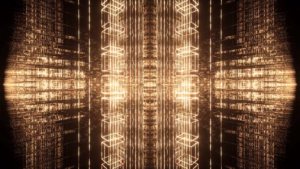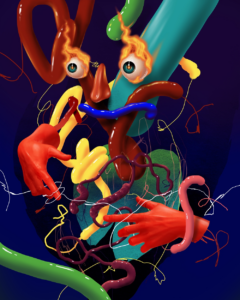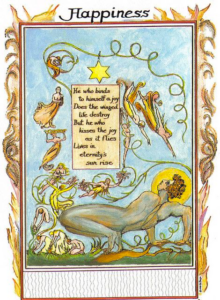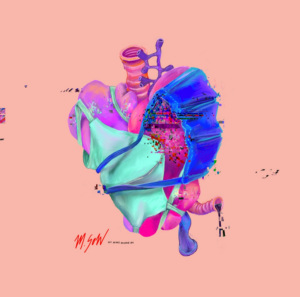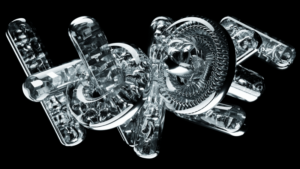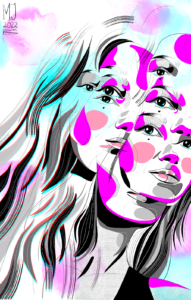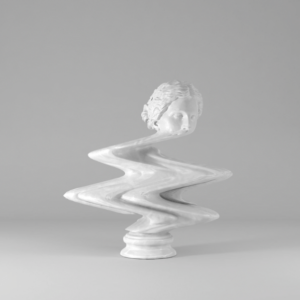“I believe I have a unique ability, perhaps inherited from my parents. When I walk through nature, I see figures, faces even, probably composed of energy, with my naked eyes. My art is an invitation to look beyond, to see that we, and nature, are all composed of energy. By realizing this connection, we might respect nature more, which has implications for environmental conservation and climate change.”
— Stefano Favaretto
Stefano Favaretto is a renowned energy photographer who creatively combines his spiritual upbringing, previous professional background in psychology, and passion for photography. After working as a psychologist, Stefano transitioned to photography, seeking a new way to help people on a larger scale.
His journey began with traditional photography, capturing landscapes and people until a visit to Carrara, the marble kingdom, changed his perspective. The quarries and their exquisite marble inspired Stefano to pursue a unique style, seeing and capturing faces and figures in the rocks, a feat that gave his nascent photography career sudden traction.
Favaretto’s work, centered around the principle of triggering emotions and facilitating an engagement between the observer and the artwork, is often showcased in exhibitions. He believes in the transformative power of art and seeks to inspire people, help them see beyond their daily lives, and bring light to the world.
He also explores the energy concept, where he connects with nature through his photographs. Stefano’s approach to photography is methodical and intuitive, often studying the legends related to the locations he visits before setting out to capture faces in nature.
Visit Stefano Favaretto’s MakersPlace Profile
Brady Walker: Stefano, to start, could you introduce yourself to our listeners, readers, and viewers?
Stefano Favaretto: Certainly. I’m Stefano Favaretto, a 53-year-old Italian-based photographer and artist living in the northern part of Italy. Before transitioning to art, I worked as a psychologist and psychotherapist for about 17 years. My fascination with photography, however, traces back to my childhood. My father, also a photographer, passed on this passion to me.
There came a point in my life when I felt somewhat fatigued with my work as a psychologist. That’s when I decided to chase my ultimate dream: photography. I left my secure job as a psychologist, venturing into the vibrant world of art, and became a full-time artist. This was about eight years ago.
For the first six years, I traveled the world, physically printing my photography on marble. Then COVID hit, and like many artists, I was confined to my home. I immersed myself in the social network Clubhouse, where I learned about NFTs. So, I decided to delve into NFT and digital art.
I had the good fortune of becoming the co-founder of Global Art Exhibition. Thanks to this project and its founder, Ascargo, I had the opportunity to join physical exhibitions post-COVID. I also became a curator, not just a featured artist. We pioneered three significant exhibitions, one in Hong Kong, one in Sharjah, with the local government, and one in Rome. These were the first NFT exhibitions in these locations. From then on, I focused on my digital art, which brings us to why I’m here with you today.
BW: I’d love to delve deeper into this transition from your life as a psychologist and psychotherapist to a full-time artist. What did that transition look like? I imagine many of our listeners and readers are contemplating a similar jump.
SF: That’s a great question. As a psychologist, I was deeply involved with the human psyche, which was incredibly enlightening. Spirituality and helping others have always been central to my family philosophy, and my work was a part of that. As a psychotherapist, though, I could only assist one person at a time. Through art, I realized I could reach more people, share light and hope, and contribute to a better world on a larger scale.
My decision to leave the profession was also prompted by its intense demands. The death of my father compounded the stress. So, I chose to follow my dream and become a full-time artist.
BW: The financial implications must have been a considerable factor. Jumping from a secure job like a psychotherapist to a field synonymous with financial instability presents quite a risk.
SF: Absolutely. As a psychologist, I had a reliable income. Shifting to the uncertain world of art was undoubtedly a risk. At the beginning, I may have been somewhat naive about this aspect. However, as time went on, I became acutely aware of it. Nonetheless, my passion and determination to follow my dream were insurmountable.
At that point in my life, I didn’t have a family to support, so I was only taking a risk for myself. Today, almost nine years later, I can say it was the right choice. The income as an artist is less stable, with highs and lows, but I’m happy with my decision. I’ve been fortunate enough to sell my artwork, especially during my time in the physical art world.
BW: You mentioned that spirituality is integral to your family, the “daily bread” so to speak. Could you elaborate on that?
SF: Absolutely. This mainly comes from my father, who worked as a healer for most of his life. He helped people heal through biotherapy or prana therapy, using the energy from his hands. I’ve witnessed people getting significantly better after severe illnesses. Thus, spirituality has always been a central theme in my family. My mother is also a medium, and she dedicates a lot of time to studying and reading about spirituality. Growing up in such an environment made these topics quite normal for me.
BW: With your background deeply embedded in spiritual practice and psychotherapy, I’m curious about your perspective on mental health, particularly for artists. Given the solitude and uncertainty inherent in art, artists’ mental health is often at risk. So, from your experience, what advice would you give to artists about maintaining their mental health?
SF: That’s an important question. Indeed, in the world of art, the risk of developing depression or other mental health disorders is quite high. I’ve met many artists in such situations. As artists, we spend a lot of time introspecting, which often translates into periods of solitude. This increases the risk of depression.
Being aware of the signs of depression is what I often suggest to many of my friends. It’s crucial to recognize when you start feeling bad, lonely, or sad consistently. That’s when it’s essential to take action, to start socializing again, and seek help.
This risk is particularly high in the NFT world, where individuals spend most of their day in front of a computer, especially during COVID. We were all confined to our homes, interacting through virtual spaces.
There’s another dynamic in the NFT world that can lead to sadness: comparison. Everyday, you’re confronted with rankings and numbers — seeing other artists who sell more or get more features. This constant comparison, which doesn’t occur in the physical art world, can be risky and may lead to depression. I hope this answers your question to some extent.
BW: That’s insightful. Let’s talk about your photography. I’ve noticed two distinct styles: the straightforward landscapes and what you refer to as ‘energy photography’. According to your website, you aim to “capture the figures and energies in natural elements that he sees with his real eyes using a digital camera, bringing them to light.” Could you elaborate on these figures and energies, and your method of capturing them?
SF: I believe I have a unique ability, perhaps inherited from my parents. When I walk through nature, I see figures, faces even, probably composed of energy, with my naked eyes.
My art involves using my camera, which I consider a scientific instrument, to photograph what I see. Cameras are objective; they capture what is there without interpretation. I do this to show people the real, energetic world around us, and remind them that we’re part of it. We just need to see with different eyes.
My art is an invitation to look beyond, to see that we, and nature, are all composed of energy. By realizing this connection, we might respect nature more, which has implications for environmental conservation and climate change.
BW: That’s fascinating. Can you tell us about the concept of ‘energy selfies’?
SF: ‘Energy selfies’ is a new concept I’m working on. Before he passed away, my father used an old device called a Kirlian device, which can detect bodily aura. You place your finger on the device, and it shows the energy around your finger. I intend to photograph this energy with my digital camera. Instead of conventional face selfies, I want to capture people’s energy. I place my finger on the device, which represents my identity, and then another person does the same, thereby creating a collective identity through our energy signatures.
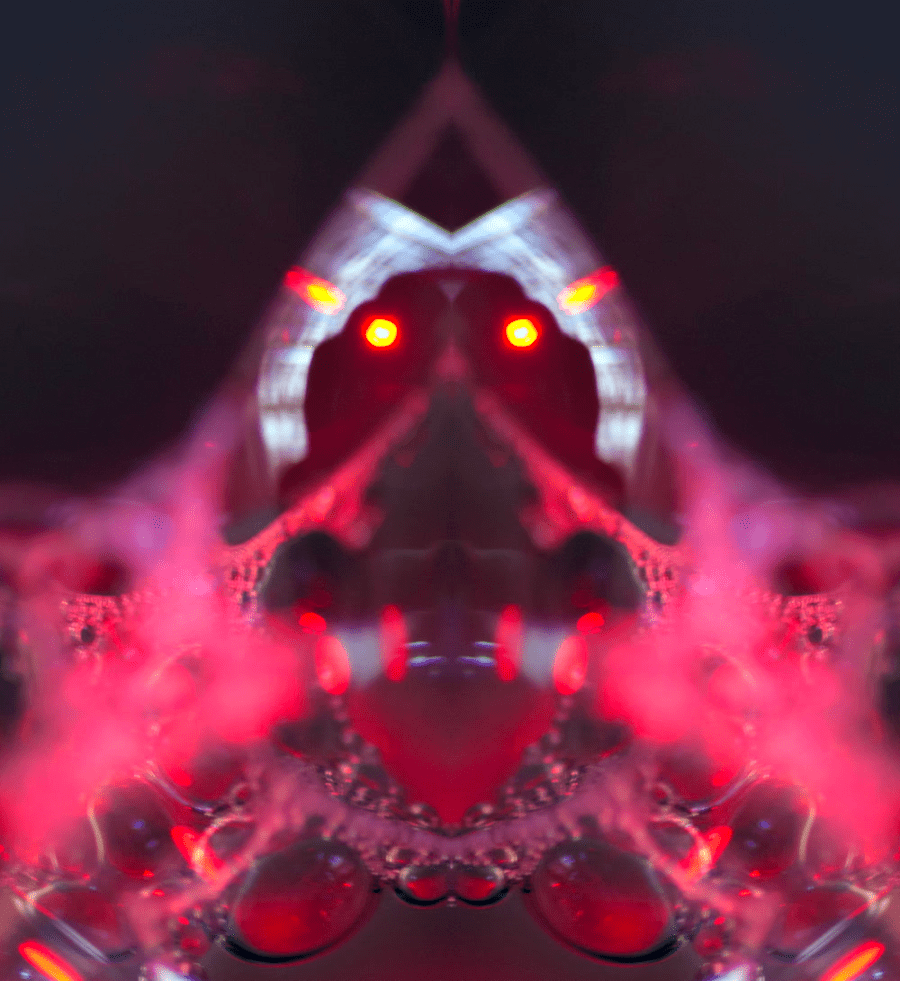
BW: How do you interpret the readings from that device? It displays different colors, correct?
SF: Yes, there are different colors, but they don’t necessarily indicate if you’re suffering from a particular ailment. The colors result from various factors, such as oxygen in the air, perspiration, and the electrical conductance of the skin, among others. However, they don’t have any diagnostic significance.
BW: What, then, is your takeaway from these readings?
SF: The primary thing I can say is that I’m capturing real energy. It’s undeniably energy that I’m photographing, and it’s associated with the individual through their finger. The person can move their finger on the device, creating a sort of personal signature that connects with my energy and creates something truly unique. It varies slightly from person to person, mainly due to differences in the skin’s electrical conductance, which can slightly alter the colors.
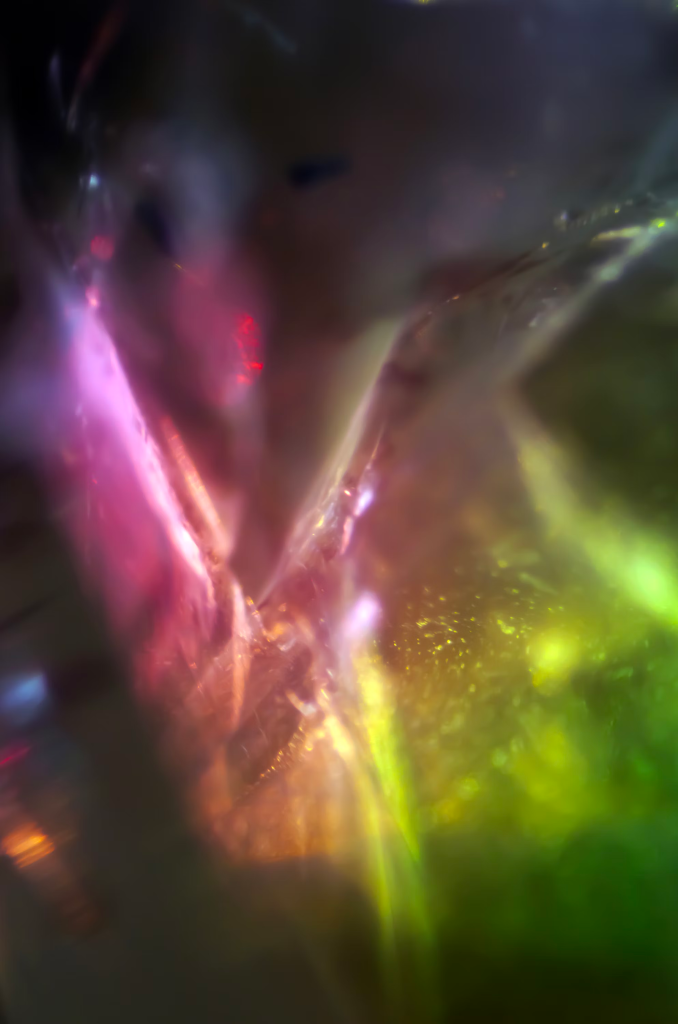
BW: It sounds intriguing, almost musical. Like when two musicians come together, what they produce may not have a conceptual meaning, but it conveys a certain feeling. Is that a rough analogy for how you see this device?
SF: Yes, absolutely. The device is part of my project because it was a gift from my father. So, it’s tied to my family identity. This family identity then interacts with the person I invite for the energy selfie, and in turn, with my personal identity. We’re connecting multiple identities, creating a concept of collective identity, which I believe resonates with our collective archetypes. This idea of archetypes and the fact that we’re all interconnected, particularly through energy, is what I aim to portray with my art.
BW: Could you talk about the ‘Light Explosion’ series? It seems to be one of your earlier works exploring this form of abstraction.
SF: I utilize different methods to photograph energy, mainly three ways. First, I read about the legends of a place, then go to that location to try and photograph the faces and characters described in the legends, bringing them to life. That’s one method.
The second involves photographing energy in different shapes and forms. For instance, in the ‘Light Explosion’ collection, I tried to capture the sunlight as it entered a prism at exactly 6pm during winter in Italy. The prism refracts the light, creating a rainbow effect, which then enters another prism. I captured the ever-changing light as it varied depending on the angle of the sun. It was truly a ‘Light Explosion’ where I was photographing the creative energy emanating from the sun at different times.
BW: And the third way?
SF: The third way is what I previously explained about the energy selfies.
BW: You have some upcoming pieces on MakersPlace, which as I understand it, utilize your first technique, for instance, ‘The Lion’. I know the story of the lion, but I’d love to hear it in your own words. It could serve as an example of how you approach this first strategy.
SF: Exactly. ‘The Lion’ is an excellent example of the first technique I mentioned. There’s a legend in Singapore that states the first Malaysian king to visit the island saw a lion there. However, we know that lions didn’t live on the peninsula. I found this legend captivating, especially as I was in Singapore at the time. So, I decided to visit the Botanic Garden, where I took a picture of some leaves. Interestingly, a beautiful face of a lion emerged from the photograph. It led me to think that perhaps the Malaysian king saw exactly what I did. Through this image, I wanted to metaphorically depict the possibility of seeing something not everyone can perceive.
BW: Your recounting of that legend reminds me that you’re from Italy. The founding myth of Rome, quite similar to the founding myth of Singapore, is a powerful one. Have you explored Rome and its connection to wolves, perhaps searching for Romulus and Remus?
SF: Indeed, I’ve delved into this because I’m fascinated by the legend of Romulus, Remus and the wolf. In the past, I worked on a significant project, a solo exhibition at one of the most important Etruscan museums, Villa Giulia in Rome.
My task was to photograph the archetypes of the Etruscan people who were closely connected to the Romans. I traveled to Tuscany and Rome to photograph pieces of marble, ruins, and roads, hoping to find archetypes like those of love and beauty. Amazing faces emerged from this exploration.
The Etruscans lived concurrently with the Romans, and some Roman kings were Etruscan. The Etruscan priests were often called to Rome to interpret the future before going into battle. My exploration was focused on the archetypes of the Etruscans.
BW: That sounds fascinating. Where can I find those photos?
SF: You can definitely find those photos online as the exhibition was a significant part of my past work. The Villa Giulia museum is renowned for its Etruscan exhibits, rivaled only perhaps by the Metropolitan.
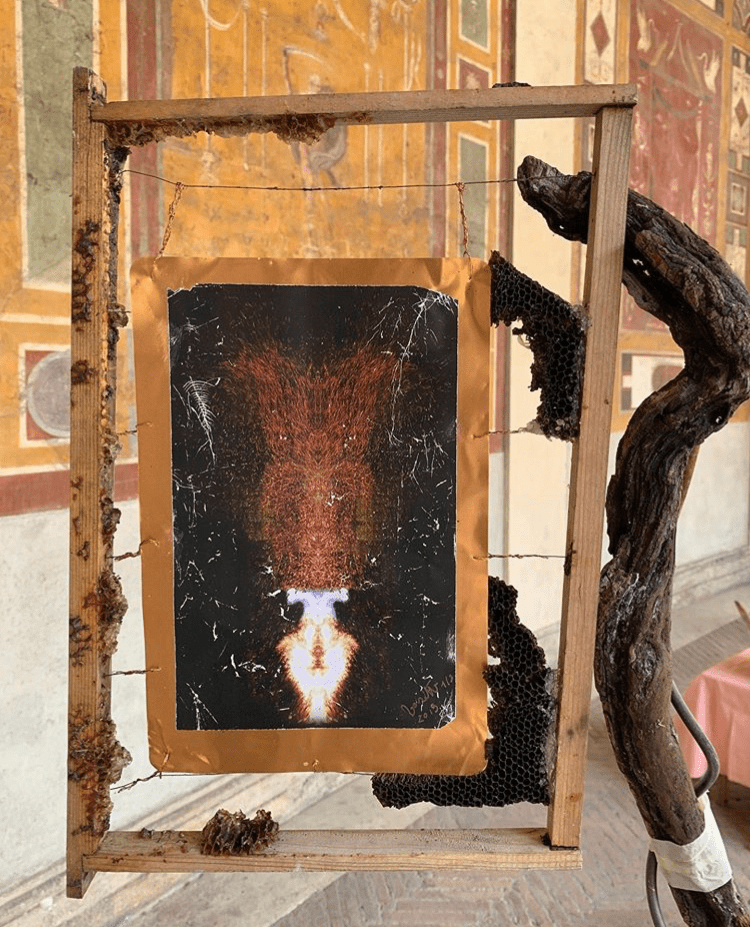
BW: When did you transition from landscape work to energy photos? Judging by your portfolio, I assume the latter came later?
SF: Yes, that’s correct. Initially, I was what you might call a traditional photographer, capturing landscapes and people. However, I felt that there were many photographers more talented than me. If I wanted to become a true master, I needed to create something different. My breakthrough came when I visited Carrara, the marble kingdom, right after leaving my job as a psychologist. They had invited me to photograph the marble quarries, which are spectacular.
In Carrara, you see mountains being cut open, revealing beautiful marble of many colors – white, red, black. I initially went with the intention of taking typical landscape photos. But soon, I started seeing faces and incredible figures in the marble. The quarry workers told me they often saw faces too. I wondered if there was something more to these visions.
After photographing these faces and presenting them to the Carrara galleries, they were so impressed that they proposed an important exhibition at the most prestigious palace in Massa Carrara, a stunning 14th-century palace similar to Versailles. This was an incredible opportunity, especially since I was an unknown artist at the time. That’s when my career took off, and from that point, I continued exploring this new concept of photography and energy.
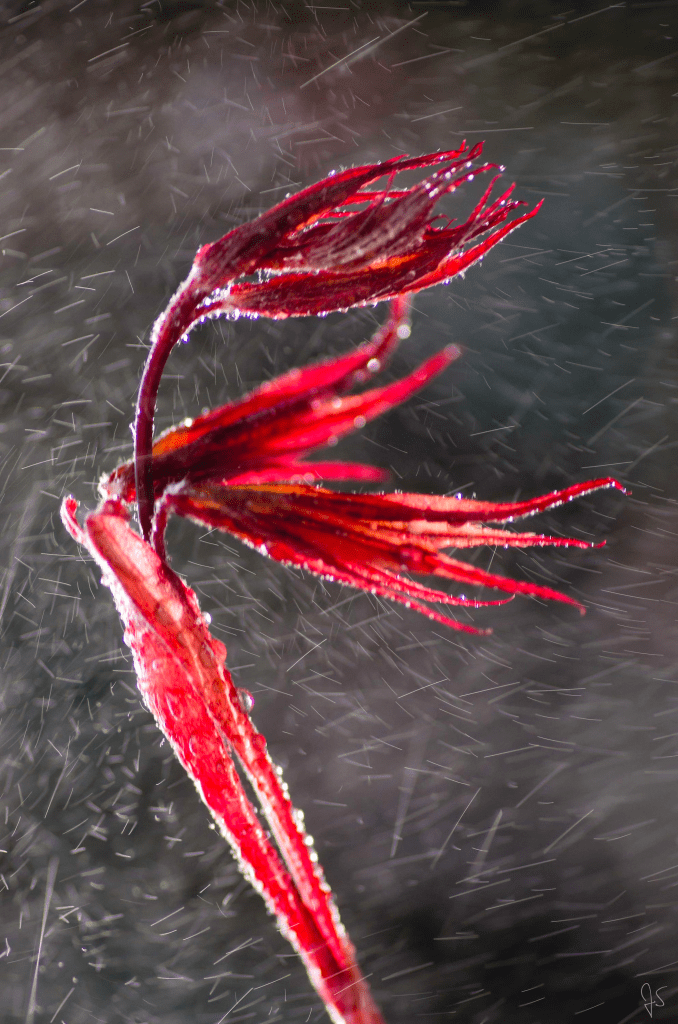
BW: That’s fascinating. I came across a biography of yours that said, “For Favaretto, a picture has to trigger emotions in a circular process that involves the observer as well as the artwork itself. The observer projects their meanings and interpretations onto the picture, making it their own. Only in this way is a photograph considered successful.” This resonates with me. But how do you know when you’ve captured something that will speak to people before it has the chance to?
SF: That’s a great question. I usually get feedback at my exhibitions. I remember a visitor who came to my exhibition three times, saying that my works resonated with them so much that they dreamt about them. This made me happy because it indicated my art was stirring emotions, and in a way, completing the circle I aim to create with my work. I want my art to involve the viewer in this circular process. Ideally, it could also facilitate a healing process, akin to what I did as a psychologist. It’s not always easy to know how people react to my art, but during exhibitions and openings, I get a glimpse.
BW: After leaving psychotherapy with the idea that your art might help people on a larger scale, do you feel like you’ve achieved that, or at least you’re on the right track?
SF: Indeed, I do. I don’t want to sound arrogant and claim that my art can heal the world or change it. But my goal is, in my small way, to contribute to a better world. Even if I’m able to help just one person, I’ve achieved my goal. My aim is to bring light to the world, convey a positive message, and offer people hope. I want to inspire people to see beyond their daily life. If I can touch one, ten, or even a thousand people, I would be thrilled. If all artists worked towards this, we could make a substantial difference.

BW: I noticed another piece in your upcoming MakerPlace drop is from the Carrara marble quarries, called “Revelations.” This place marked the beginning of your career, so it’s interesting that this piece is now being released as an NFT. There’s also a third piece, but I don’t have any details on that in my notes. Could you tell me about it?
SF: The third piece explores the energy concept, where I put my finger on a device and place a quartz mineral near it. Minerals play a significant role in my art because they are natural elements imbued with living energy. I placed the quartz on the device, with my finger near the quartz, allowing my energy to envelop the mineral and establish a connection. This mineral represents nature, so symbolically, I’m connecting with nature through this device and the energy selfie concept. It’s like a natural energy imprint.
BW: You seem to work with an intuitive approach, exploring settings and possibly seeking out specific elements. Could you describe your process? Are you hunting for particular things or is it more of an open, meditative exploration where you may not always find something? What does finding these faces in leaves and rocks look like?
SF: My process begins with a thorough study of the legend related to the place I’m visiting. For instance, I live in the Dolomites, a World Heritage site, known for its numerous legends. If a legend is tied to a particular village or part of the Dolomites, I read that legend, then visit that exact location. In a meditative manner, as you mentioned, I start observing the surroundings. When I spot a face, I photograph it.
To be honest, sometimes it’s disappointing. I might return home and not see the face anymore in the photo, as my camera can’t always capture the material part of what I saw. Perhaps it’s because my ability extends beyond perceiving just the material – I might be seeing something energetic that not everyone can, and the camera fails to capture that. That’s why sometimes I mirror images to complete the figure, since the camera may only capture a part of it. It’s complex to explain.
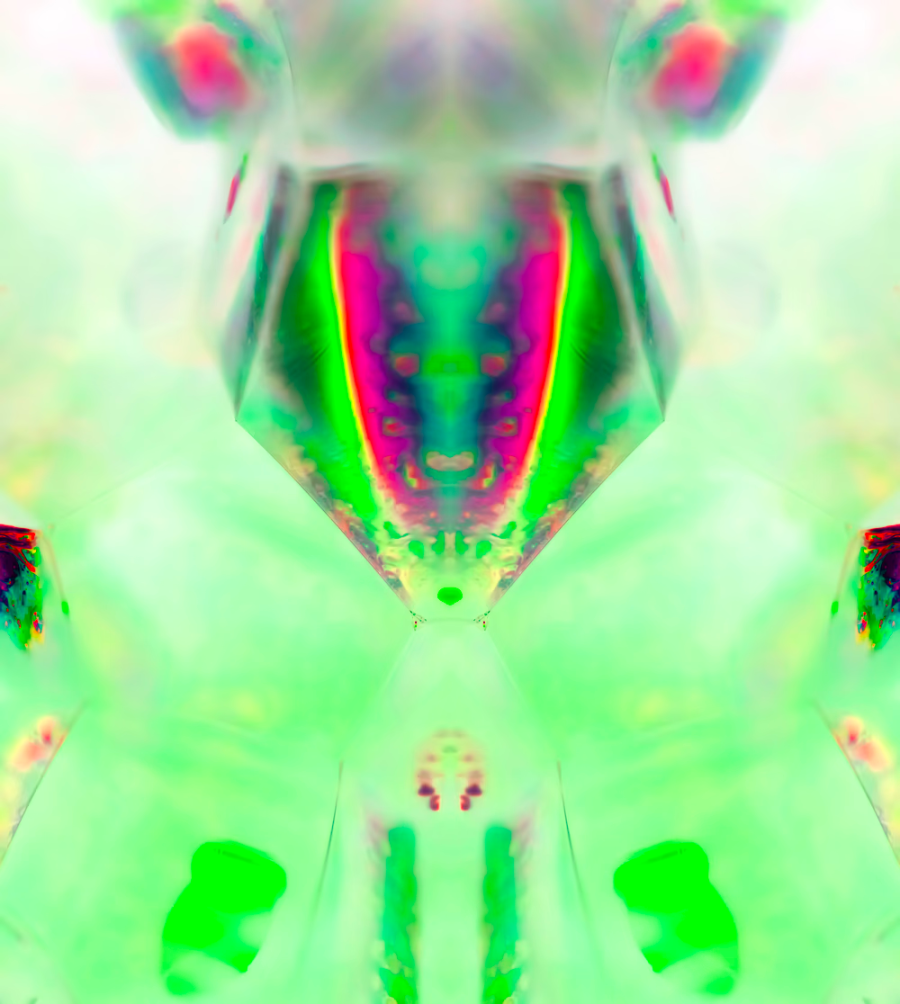
BW: That leads me to another question around frustration as an artist. How do you handle it? Your process involves searching for specific moments and elements. If you don’t find what you’re looking for, how does that frustration affect you and how do you cope?
SF: Frustration is an inherent part of being an artist. If you’re not experiencing some frustration, you’re likely not pushing your boundaries. Frustration drives growth, pushes you to become better, and rekindles the search. If you perceive yourself as perfect, you’ve hit a plateau as an artist, with nothing more to explore or learn.
Of course, frustration should not be overwhelming. Too much can rob you of your happiness, which is essential in life. When I feel frustrated, I often talk it out with my girlfriend, relatives, or my mother. I express my disappointment about a certain picture or project, or about not being able to capture and share the intriguing faces I saw. Their support helps alleviate the frustration.
Additionally, nature is a great solace to me, as is sport. I enjoy volleyball, tennis, running, and soccer. These activities also help vent my frustrations.
BW: That’s valuable advice for all artists, particularly crypto artists who might benefit from stepping away from their computers more often. On a practical note, how do you manage your time, particularly in the crypto art world? There’s a lot of career management involved – managing a website, promoting yourself on Twitter, and creating art. How do you balance these demands?
SF: As a web3 artist, most of my time is spent self-managing. This includes daily social media promotion on Twitter, Instagram, LinkedIn, and YouTube. The first thing I do each day is to engage with the posts of others because I believe it’s crucial to be part of and support the community.
I’ve brought many artists into the exhibitions I’ve created because I sincerely believe we should help each other. So, I spend my day interacting with others, posting my artwork or related content, then working on new pieces or reviewing past work. By the time I’m done with these tasks, my day is nearly over.
BW: What’s the most recent insight or lesson you’ve learned about art and the creative life? If you could impart some wisdom to yourself from three or four years ago, what would it be?
SF: I’ve learned that art is integral to being human, and we can’t live without it. It’s important for everyone to engage in creativity, even in the simplest ways, as it stimulates the brain. We don’t all have to be artists, but we should strive to be creative. Being creative allows us to express our emotions, which is essential for our human experience. So, my advice is: Be creative. It’s truly important.
For updates on all of our upcoming artist spotlights, subscribe to our newsletter below.
- SEO Powered Content & PR Distribution. Get Amplified Today.
- PlatoData.Network Vertical Generative Ai. Empower Yourself. Access Here.
- PlatoAiStream. Web3 Intelligence. Knowledge Amplified. Access Here.
- PlatoESG. Automotive / EVs, Carbon, CleanTech, Energy, Environment, Solar, Waste Management. Access Here.
- BlockOffsets. Modernizing Environmental Offset Ownership. Access Here.
- Source: https://rare.makersplace.com/2023/07/17/spiritual-photography-studying-legends-and-seeing-energy-an-interview-with-stefano-favaretto/?utm_source=rss&utm_medium=rss&utm_campaign=spiritual-photography-studying-legends-and-seeing-energy-an-interview-with-stefano-favaretto
- :has
- :is
- :not
- :where
- $UP
- 1
- 12
- 17
- 3000
- 9
- a
- ability
- Able
- About
- about IT
- absolutely
- abstraction
- According
- achieved
- across
- Action
- activities
- advice
- affect
- After
- again
- ago
- aim
- AIR
- All
- alleviate
- Allowing
- allows
- also
- always
- amazing
- among
- an
- and
- Another
- answers
- any
- anymore
- approach
- ARE
- around
- Art
- artist
- Artists
- artwork
- AS
- aspect
- assist
- associated
- assume
- At
- Aura
- aware
- away
- back
- background
- Bad
- Balance
- Battle
- BE
- beautiful
- Beauty
- became
- because
- become
- becoming
- been
- before
- began
- Beginning
- being
- believe
- believes
- below
- benefit
- Better
- between
- Beyond
- Black
- blockchain
- boundaries
- Brain
- breakthrough
- bring
- Bringing
- Brings
- brought
- but
- by
- call
- called
- came
- camera
- cameras
- CAN
- captivating
- capture
- captured
- Capturing
- Career
- centered
- central
- certain
- certainly
- Chance
- change
- changed
- characters
- chase
- choice
- chose
- Circle
- claim
- Climate
- Climate change
- closely
- clubhouse
- Co-founder
- collection
- Collective
- combines
- come
- comes
- community
- comparison
- complete
- completing
- complex
- composed
- computer
- computers
- concept
- conceptual
- connected
- Connecting
- connection
- connects
- CONSERVATION
- Consider
- considerable
- considered
- constant
- content
- continued
- contribute
- conventional
- correct
- could
- course
- Covid
- create
- created
- creates
- Creating
- Creative
- Creatively
- creativity
- crucial
- crypto
- Crypto Art
- curious
- Cut
- daily
- day
- Death
- decided
- decision
- deeper
- definitely
- demands
- Depending
- depression
- describe
- described
- details
- determination
- developing
- device
- DID
- difference
- differences
- different
- digital
- Digital Art
- disappointing
- disappointment
- disorders
- displays
- distinct
- do
- does
- Doesn’t
- dolomites
- done
- Dont
- dream
- dreamt
- drives
- Drop
- due
- during
- dynamic
- each
- Earlier
- easy
- Editorial
- effect
- Elaborate
- elements
- embedded
- emerged
- emotions
- energy
- engage
- engagement
- enjoy
- enough
- entered
- Enters
- Environment
- environmental
- especially
- essential
- establish
- Even
- ever-changing
- everyday
- everyone
- exactly
- example
- excellent
- exhibition
- Exhibitions
- exhibits
- experience
- experiencing
- Explain
- explained
- exploration
- explore
- Explored
- explores
- Exploring
- explosion
- express
- extends
- extent
- Eyes
- Face
- faces
- facilitate
- facilitating
- fact
- factor
- factors
- fails
- family
- fascinating
- feat
- featured
- Features
- feedback
- feel
- field
- Figure
- Figures
- financial
- Find
- finding
- finger
- First
- focused
- follow
- For
- form
- forms
- fortunate
- Fortune
- found
- founder
- founding
- four
- friends
- from
- front
- frustrated
- frustration
- Frustrations
- future
- galleries
- Garden
- get
- getting
- gift
- Give
- given
- Glimpse
- Global
- Go
- goal
- going
- good
- Government
- great
- Growing
- Growth
- had
- handle
- Hands
- happy
- Have
- he
- healing
- Health
- hear
- help
- helped
- helping
- helps
- here
- heritage
- High
- Highs
- his
- Hit
- Home
- Homes
- Hong
- Hong Kong
- hope
- hoping
- How
- However
- HTTPS
- human
- Human Experience
- Hunting
- i
- idea
- ideally
- identities
- Identity
- if
- image
- images
- imagine
- immersed
- implications
- important
- impressed
- in
- includes
- Income
- Increases
- incredible
- incredibly
- indicate
- indicated
- individual
- individuals
- inherent
- initially
- insight
- insightful
- inspire
- inspired
- instability
- instance
- instead
- instrument
- integral
- intend
- Intention
- interacting
- interacts
- interconnected
- interesting
- interpretation
- Interview
- into
- intriguing
- introduce
- intuitive
- invitation
- invite
- invited
- involve
- involved
- island
- IT
- Italy
- ITS
- itself
- Job
- join
- journey
- jump
- just
- just one
- King
- Kingdom
- Know
- known
- Kong
- landscape
- larger
- later
- lead
- Leads
- LEARN
- learned
- least
- Leave
- leaving
- Led
- left
- Legends
- less
- lesson
- Life
- light
- like
- likely
- Lion
- live
- Lives
- living
- local
- Local Government
- location
- locations
- Look
- look like
- looking
- Lot
- love
- Lows
- made
- mailchimp
- mainly
- maintaining
- make
- Making
- Malaysian
- manage
- management
- managing
- manner
- many
- marked
- master
- material
- max-width
- May..
- me
- meaning
- meanings
- Media
- medium
- mental
- Mental health
- mentioned
- message
- met
- method
- methodical
- methods
- might
- mineral
- minerals
- mirror
- Moments
- more
- most
- mother
- move
- much
- multiple
- Museums
- musical
- musicians
- must
- my
- nascent
- Natural
- Nature
- Near
- nearly
- necessarily
- Need
- needed
- network
- New
- Newsletter
- NFT
- NFTs
- normal
- Notes
- nothing
- now
- numbers
- numerous
- objective
- occur
- of
- off
- offer
- often
- Old
- on
- ONE
- online
- only
- open
- openings
- Opportunity
- or
- Other
- Others
- our
- out
- over
- own
- Oxygen
- Palace
- parents
- part
- particular
- particularly
- passed
- passion
- past
- People
- people’s
- perfect
- perhaps
- periods
- person
- personal
- perspective
- philosophy
- photo
- photographer
- photographs
- photography
- Photos
- physical
- Physically
- picture
- piece
- pieces
- pioneered
- Place
- plato
- Plato AiStream
- Plato Data Intelligence
- PlatoAiCast
- PlatoData
- Play
- plugin
- Point
- portfolio
- positive
- possibility
- possibly
- Posts
- power
- powerful
- Practical
- practice
- presents
- prestigious
- previous
- previously
- primary
- principle
- printing
- probably
- process
- produce
- profession
- professional
- project
- projects
- promoting
- promotion
- proposed
- Psychology
- psychotherapy
- pursue
- pushes
- Pushing
- put
- quarry
- question
- reach
- React
- Read
- readers
- Reading
- real
- realized
- realizing
- recent
- recognize
- Red
- related
- relatives
- released
- reliable
- remember
- Renowned
- represents
- resonates
- respect
- result
- return
- revealing
- reviewing
- right
- Risk
- Risky
- roads
- rob
- Role
- rome
- RUINS
- running
- Said
- same
- saw
- say
- saying
- Scale
- scientific
- Search
- searching
- Second
- secure
- see
- seeing
- Seek
- seeking
- Seeks
- seem
- seems
- sees
- selfie
- sell
- Series
- serve
- setting
- settings
- severe
- shapes
- Share
- Sharjah
- she
- SHIFTING
- should
- show
- showcased
- Shows
- Signatures
- significance
- significant
- significantly
- Signs
- similar
- since
- Singapore
- site
- situations
- SIX
- Skin
- small
- So
- Soccer
- Social
- social media
- social network
- socializing
- some
- something
- somewhat
- Soon
- Sound
- spaces
- speak
- specific
- spectacular
- spend
- spent
- Sport
- Spot
- stable
- start
- started
- States
- stepping
- stimulates
- Storm
- Story
- straightforward
- Strategy
- stress
- strive
- Study
- Studying
- Stunning
- style
- styles
- subscribe
- substantial
- successful
- such
- sudden
- suffering
- suggest
- Sun
- sunlight
- support
- synonymous
- Take
- taking
- talented
- Talk
- Task
- tasks
- tell
- ten
- tennis
- than
- thanks
- that
- The
- The Future
- The Lion
- the world
- their
- Them
- theme
- then
- therapy
- There.
- thereby
- These
- they
- thing
- things
- think
- Third
- this
- those
- though?
- three
- thrilled
- Through
- Tied
- time
- times
- to
- today
- together
- too
- took
- Topics
- touch
- towards
- track
- traction
- traditional
- transformative
- transition
- transitioning
- traveled
- tried
- trigger
- triggering
- true
- truly
- try
- TURN
- two
- typical
- ultimate
- Uncertain
- Uncertainty
- understand
- undoubtedly
- unique
- unknown
- until
- upcoming
- Updates
- us
- used
- using
- usually
- utilize
- Valuable
- various
- vibrant
- viewers
- Village
- Virtual
- visions
- Visit
- visited
- Visitor
- Visits
- walker
- want
- wanted
- was
- Way..
- ways
- we
- Web3
- Website
- WELL
- went
- were
- What
- What is
- when
- which
- white
- WHO
- why
- will
- Winter
- wisdom
- with
- without
- witnessed
- Wolf
- WordPress
- WordPress plugin
- words
- Work
- worked
- workers
- working
- works
- world
- would
- years
- yes
- you
- Your
- yourself
- youtube



